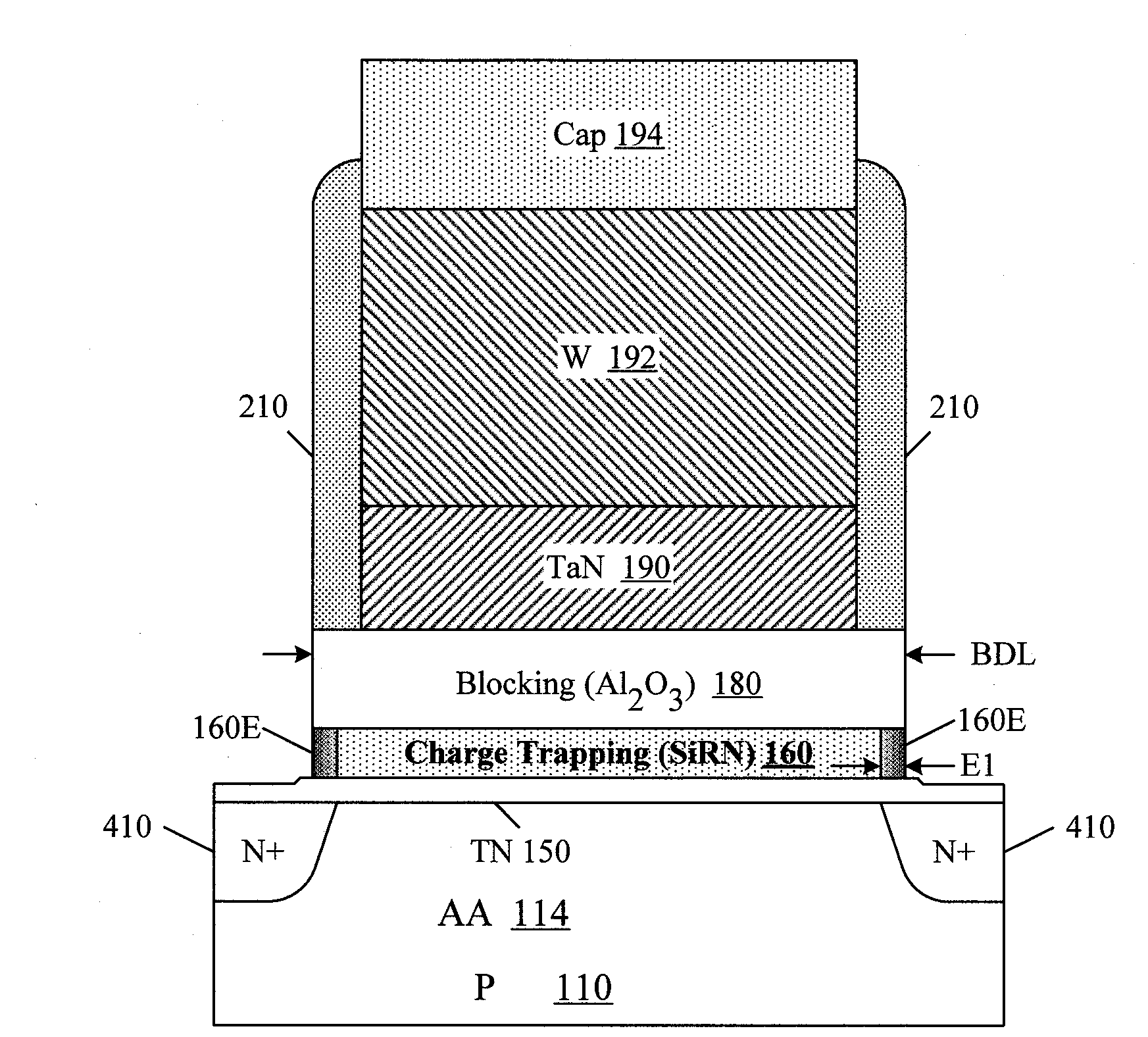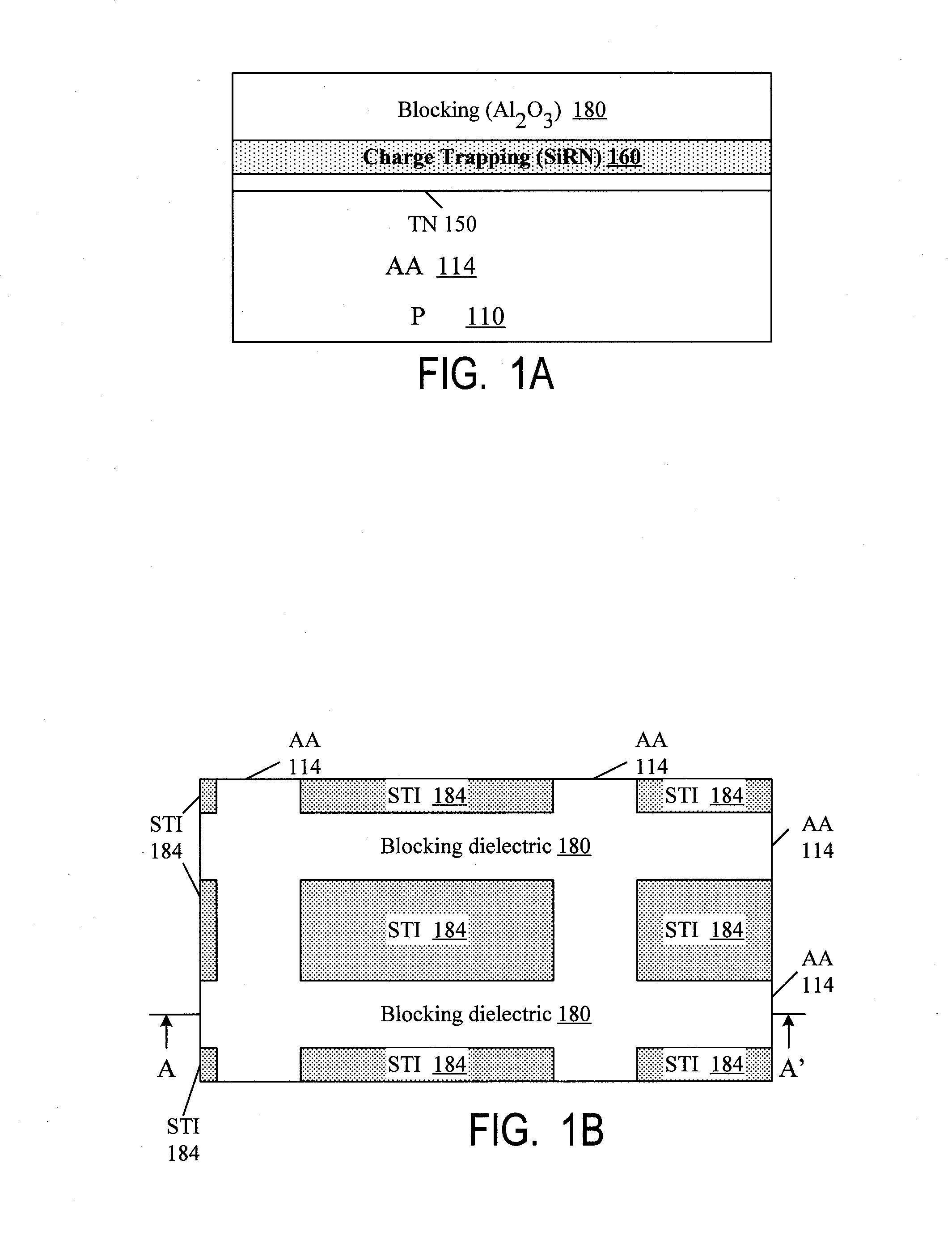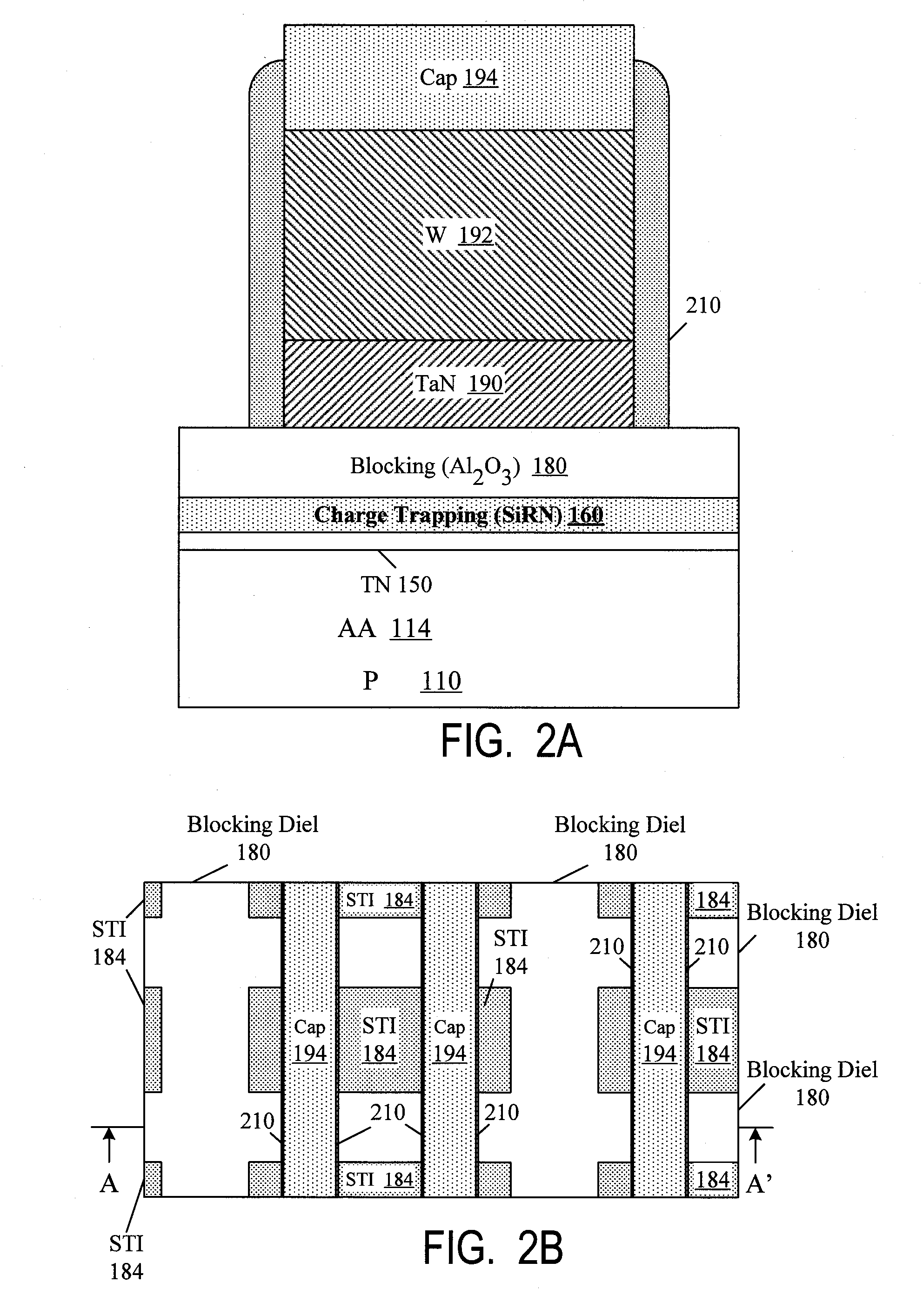Nonvolatile memories with charge trapping dielectric modified at the edges
a charge trapping dielectric and edge modification technology, applied in the field of charge trapping memories, can solve the problems of reducing data retention time, reducing reducing the insulation property of blocking dielectrics at the edges, so as to reduce the density of charge trapping sites, reduce the conductivity of charges, and reduce current leakage through blocking dielectric edges
- Summary
- Abstract
- Description
- Claims
- Application Information
AI Technical Summary
Benefits of technology
Problems solved by technology
Method used
Image
Examples
Embodiment Construction
[0020]The embodiments described in this section illustrate but do not limit the invention except as defined by the appended claims. In particular, the materials and dimensions given in this section are for illustration purposes only except as defined by the appended claims.
[0021]FIGS. 1A, 1B illustrates the beginning stages of fabrication of an array of memory cells which incorporate an embodiment of the present invention. The invention is not limited to an array or a particular array or cell architecture, and may include a single memory cell or any combination of such cells. FIG. 1A shows a vertical cross section along the line A-A′ shown in the top view FIG. 1B. FIGS. 1A, 1B are not drawn to the same scale. As shown in FIG. 1A, an isolated P well is formed in monocrystalline silicon substrate 110. The P well will include the memory cell's active area 114. Tunnel dielectric 150 is formed on the active area 114. In some exemplary, non-limiting embodiments, dielectric 150 is silicon ...
PUM
 Login to View More
Login to View More Abstract
Description
Claims
Application Information
 Login to View More
Login to View More - R&D
- Intellectual Property
- Life Sciences
- Materials
- Tech Scout
- Unparalleled Data Quality
- Higher Quality Content
- 60% Fewer Hallucinations
Browse by: Latest US Patents, China's latest patents, Technical Efficacy Thesaurus, Application Domain, Technology Topic, Popular Technical Reports.
© 2025 PatSnap. All rights reserved.Legal|Privacy policy|Modern Slavery Act Transparency Statement|Sitemap|About US| Contact US: help@patsnap.com



